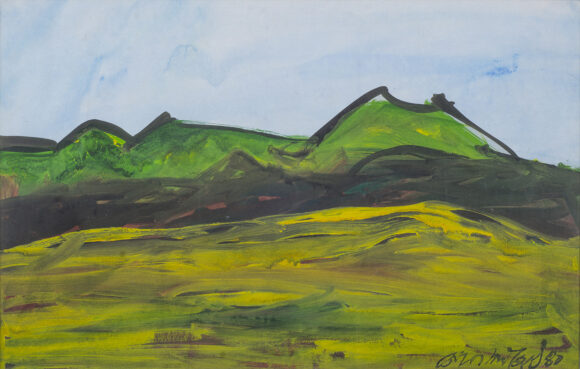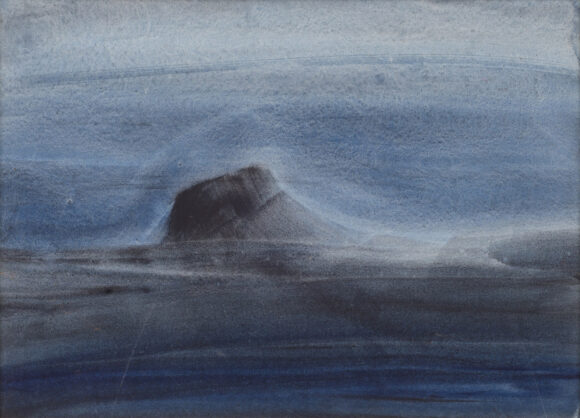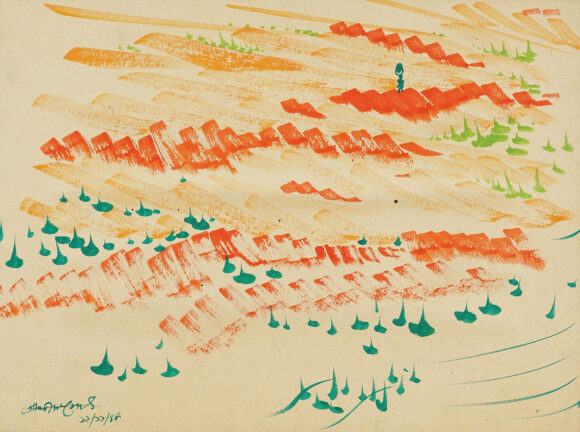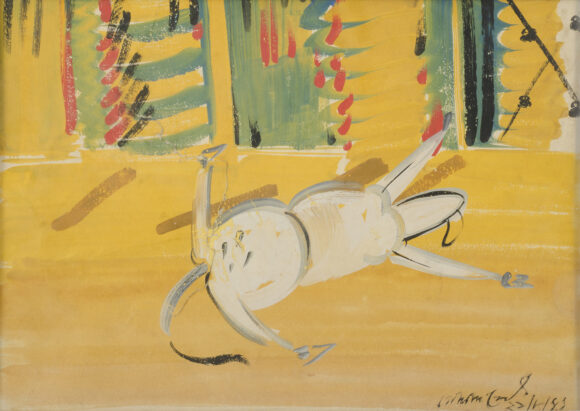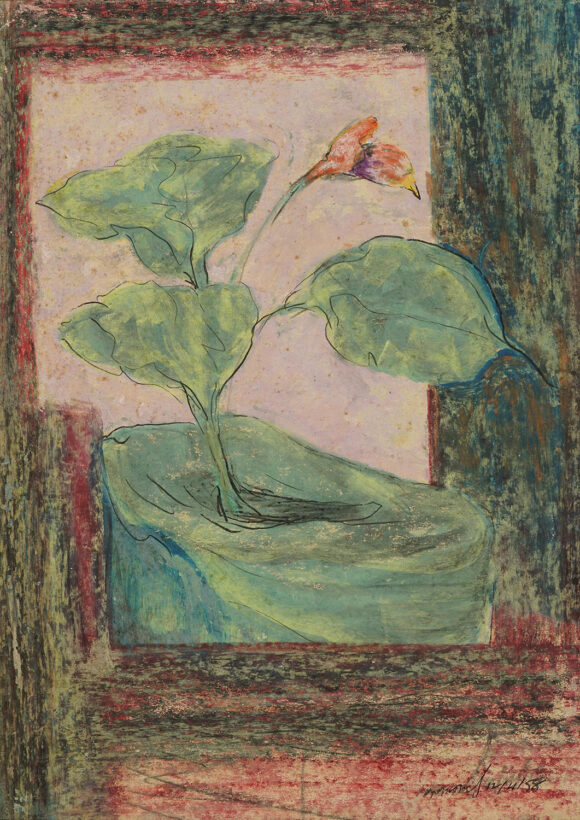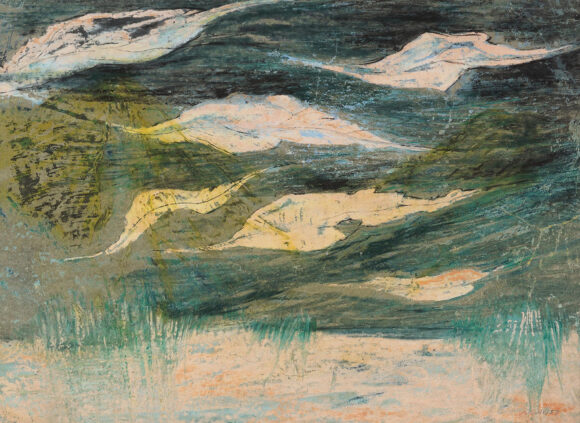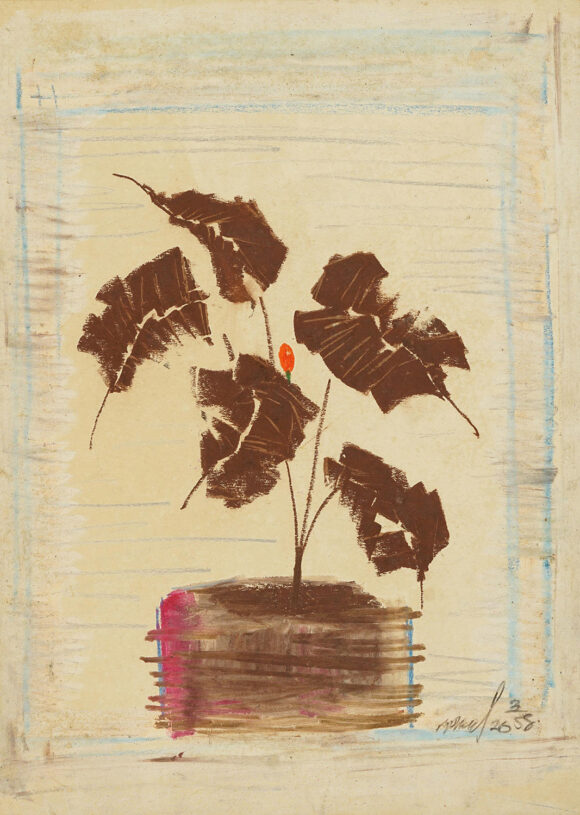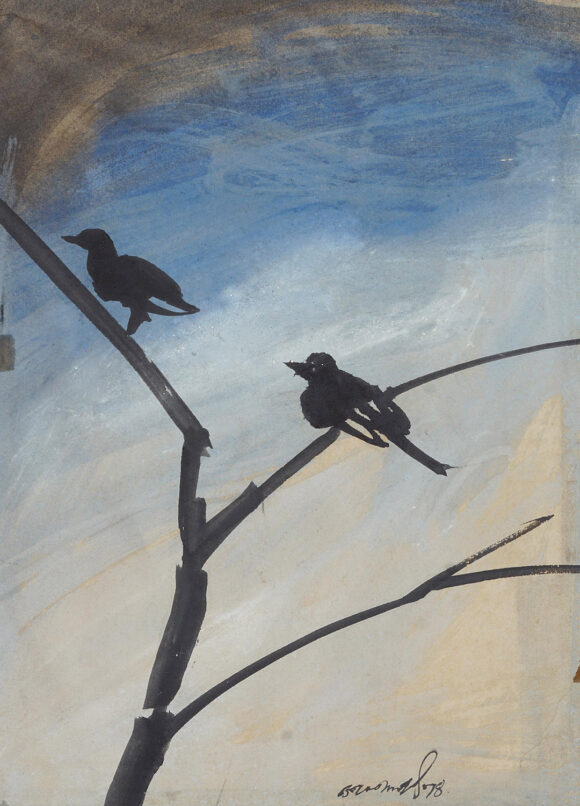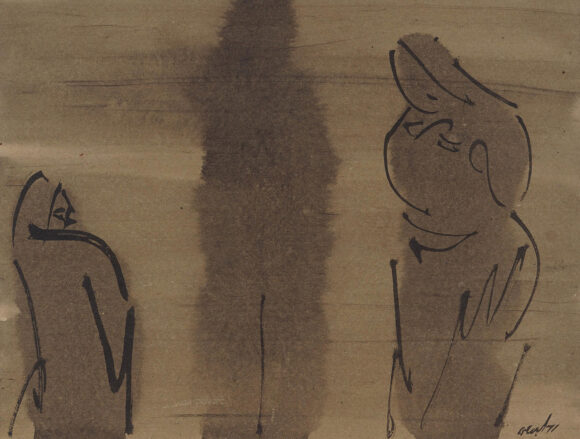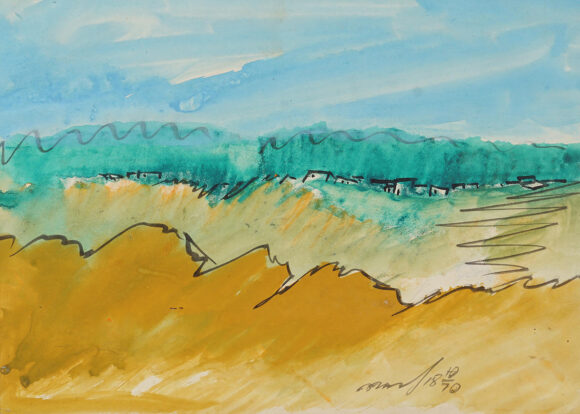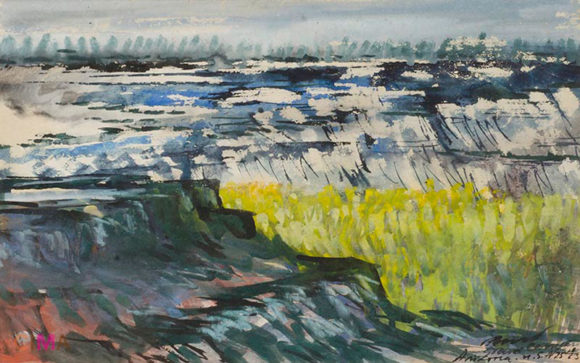Gopal Ghosh
Gopal Ghosh’s (1913 – 1980) earliest training in art was at Jaipur under Sailendranath Dey in the Maharaja School of Arts and Crafts (1931-35). From here, he went to study further under Debi Prasad Roychowdhury in the Madras Government School of Arts.
He chose to become a teacher and taught in institutes like the Indian Society of Oriental Art (1940-45), Bengal Engineering College (where he taught architectural design) and the Government College of Arts and Crafts, Calcutta.
One of the founder members of the Calcutta group (1943), he came in close proximity to the communists with the overcast of famine in Bengal. This was partly reflected in his art. However, till today he is recognized most as an outstanding landscape painter of Modern India with a capacity of interpreting nature in his own personal terms. Human figures – even when they appear on his canvas remain insignificant except for schematic alteration.
His paintings are characterized by quick calligraphic lines and bright, warm imaginary colours. Working with water colour, tempera, mixed and pastel mediums, his preference was for figuration to abstraction. However he never followed Western Academcism. Instead his inspiration can be traced to classical Chinese (in the rendering of ink and brush) and Western Impressionism.

